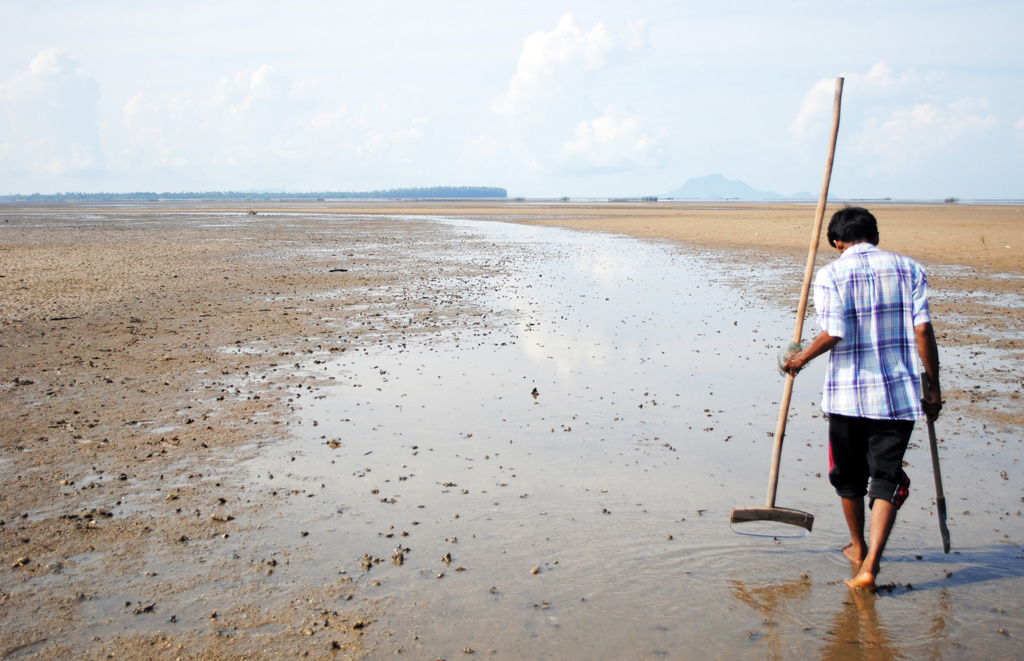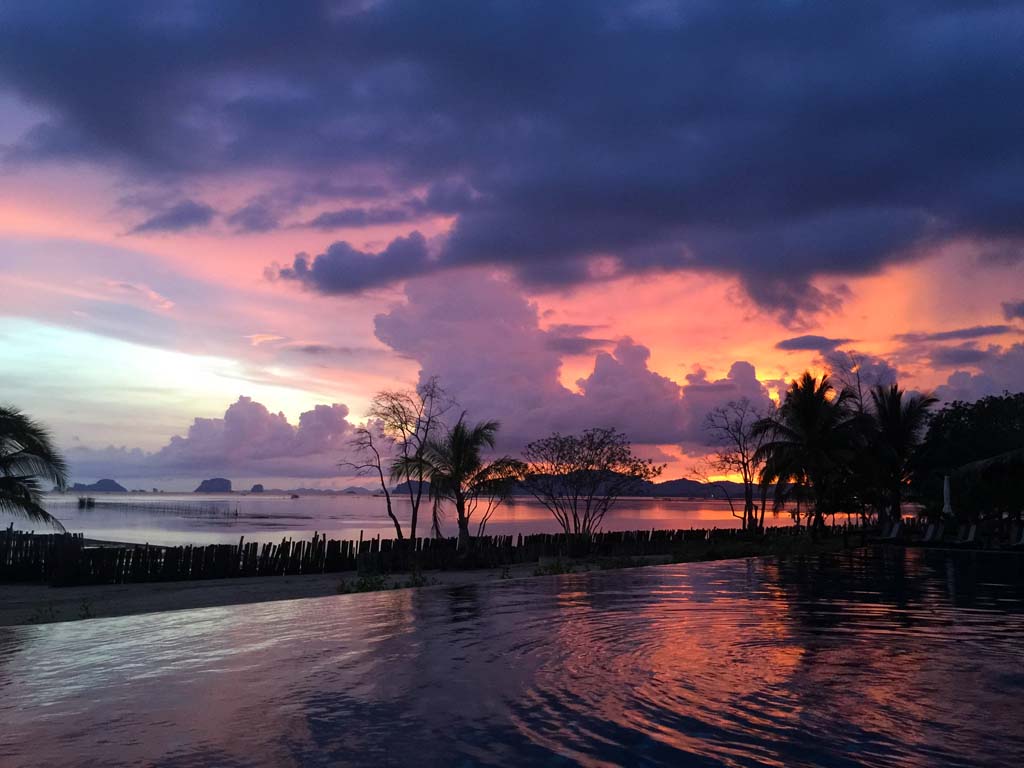Koh Klang is a quiet muslim enclave, far from the hustle and bustle of nearby Krabi. Here you’ll find a more immersive experience, get to know the locals, and learn a bit about their unique culture.
A short boat ride away from popular beach resort, Krabi is the little-known island of Koh Klang, a quiet little Muslim enclave, and while its only a 5-minute long-tail boat ride from Krabi town, it seems a million miles away – a step back in time to a peaceful rural community, where the locals grow organic rice and live off the fruits of the sea.
After our short trip across the water, we’re greeted by colourful tuk tuks that take us to our accommodation, an eco resort called Islanda Hideaway Resort. Thatched villas overlook an infinity pool and beyond that, a rather spectacular sunset, tall limestone islands silhouetted against a pink and purple sky.
The following morning we’re taken on a tour of the foreshore for a lesson on how to dig up shellfish in the low tide, and then out to sea on a long-tail boat with a local fisherman to inspect his fish traps, as he shows us how they use a bit of clever engineering to trap fish overnight as the tide turns.
It’s an exercise in patience (much like any fishing trip) as we scour the muddy flats looking for the tell tale bubbles in the mud, scoop up the mud and pick out the shellfish. They don’t look incredibly appetizing but I’m assured they’re great with a bit of garlic and chili.
The fish traps are further out in the estuary, a series of triangular funnels, each getting smaller that, ultimately, trap their prey as the tide turns. Our guide lifts the net revealing a couple of mud crabs, crayfish and a few prawns.
The trapped seafood is taken back upstream to one of several floating seafood restaurants, where we’re presented with a seafood feast. The fish and crayfish caught in the traps here are kept in floating tanks for guests to choose from – and some appear to have grown to an impressive size in the process.
From here we head further upstream and transfer to kayaks for an paddle through the thick mangrove forests picking our way through a labyrinth of mangrove roots and steep limestone islands as we follow our guide to a sandy shore for a break.
Tall limestone cliffs, pock-marked with caves, surround the beach, and a ladder leads up to one of the larger caves, which we’re told was once used by Japanese troops to hide from the Allies during the war. The small entrance opens into a huge cavern, tall stalagmites reaching up to meet their corresponding stalactites.
After exploring the cave’s nooks and crannies we return to the beach for a snack of barbequed coconut paste and sugarcane before returning to our digs for the night.
The next day we get another lesson in local agriculture as we’re escorted around the rice fields and then shown how to mill the red organic rice they grow here on the island before being taken back to the village for an art lesson.
The locals here produce beautiful batik fabric, and we’re invited to join in and create a few little masterpieces of our own. Seated under the shade of a huge fig tree, we find our inner Picasso and paint within the lines of wax, before returning to the resort for the evening, our last chance to watch the sunset.





